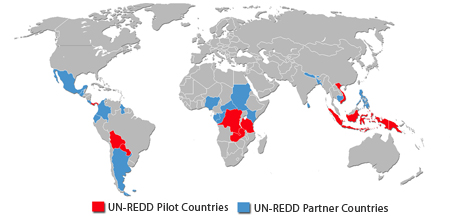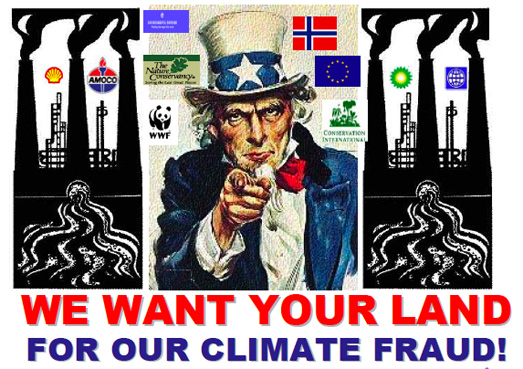 By Anne Petermann, Global Justice Ecology Project
By Anne Petermann, Global Justice Ecology Project
On November 25th in Denmark, Stine and Tannie, friends of GJEP Co-Director/ Strategist Orin Langelle and myself, were sentenced to four months of probation for violating Denmark’s anti-terrorism laws. Their crime: organizing for climate justice under the auspices of the international Climate Justice Action alliance.
They were arrested and convicted for being effective spokespeople and organizers. For being strong women who stood up against the threats of state repression on behalf of the billions of voiceless people shut out of the UN Climate Negotiations in Copenhagen. The people already suffering the impacts of the climate crisis—floods, droughts, the very ground beneath some communities melting away before their very eyes.
I had first met Stine in Copenhagen in September 2008 at the meeting where Climate Justice Action was founded. More than 120 activists from around the world had come together to lay the groundwork for massive protests at the Copenhagen climate talks in December 2009. Orin and I got to know her better at subsequent CJA meetings in Poznan, Poland, Belem, Brazil and again in Copenhagen in March 2009. Then, on December 3rd, when Orin and I emerged exhausted and bleary from our international flight to Copenhagen for the climate talks, Stine and Tannie met us with hugs at the airport, video camera in hand, and kindly led our exhausted selves from the airport to our hotel. We spent the next several days in public spaces finalizing plans for the Reclaim Power action and playing “spot the undercover cop,” which most times was not difficult as they were straining so hard to hear us that they nearly fell off their chairs.
Stine, being Danish, was one of the foremost spokespeople for Climate Justice Action. Over the months leading up to the Copenhagen Climate COP, she explained the logic of the “Reclaim Power” action that was to take place on December 16th—the day the high level Ministers arrived. At this action, observers, delegates and Indigenous Peoples marched out of the failing climate talks at the Bella Center in protest not only of their ineffectiveness, but of their outright corruption by industry and the market. At the same time that the halls of the Bella Center echoed with the booming voices of those reclaiming their power on the inside, Stine and Tannie were leading a contingent of demonstrators on the outside who were marching toward the Bella Center with the intent of meeting those marching out at the security fence that divided the sanctioned or “accredited” participants from those who were not. The concept of the action was that those disaffected participants from the inside would meet the excluded from the outside and hold a “Peoples’ Assembly” at the fence where participants could discuss real solutions to the climate crisis and strategize ways to make real change. Security, however, had other ideas and forcibly stopped both contingents before they met at the fence—using truncheons, pepper spray and whatever other “less lethal” weapons they happened to have on hand.
At that moment, the UNFCCC exposed its true self. It had for years become increasingly undemocratic and repressive and now it was showing the world through this over zealous heavy-handed response to the simple demand of people to meet and talk. Exposing the UNFCCC was one of the intentions of the action. We knew the UNFCCC would show its true colors if confronted with people powerfully demanding justice and free speech.
Though she led the march on the outside, Stine was, in fact, accredited by Global Justice Ecology Project and had participated on the inside of the COP—in particular the day before the march out where she spoke at a Climate Justice Action and Climate Justice Now! joint press conference that GJEP had helped arrange.
We knew the “Reclaim Power” action would be a success when Stine walked into the packed press conference room and the cameras began flashing.
But for the action, Stine chose to be part of the group marching to the Bella Center from the outside. She and Tannie stood on the sound truck and spoke to the crowd about the importance of the action and of standing up for climate justice in the face of oppressive climate negotiations where business and the markets reigned supreme. When they approached the fence surrounding the Bella Center, they were violently yanked off of the truck by Danish security and arrested under terrorism charges for the heresy of insisting that people have a say in the increasingly urgent issue of the climate crisis.
The timing of the sentencing—nearly a full year after the so-called “crime” was committed, was undoubtedly to warn any ne’er-do-wells at the 2010 Cancun Climate Conference of the consequences of messing with the UN. The UNFCCC does not want the image of being seen as a target for major protests by “civil society” groups and people around the world who are fed up with their inaction.
I first saw them demonstrate this uneasiness at the Climate Conference (COP-14) in December 2008. During this climate conference, Climate Justice Now!—the alliance of organizations representing social movements, small farmers, fisherfolk and others on the front lines of the climate crisis—held a press conference. At this press conference it was announced that Climate Justice Now! was joining together with Climate Justice Action to mobilize protests around the world on the opening day of the Copenhagen Climate conference (COP-15) the next year. Coincidentally, this COP was timed to open on November 30, 2009—the ten-year anniversary of the “Battle of Seattle” where the meetings of the World Trade Organization were shut down by massive street protests. This was where “Teamsters and Turtles” united to demonstrate the power that could be wielded when movements united to confront their common root causes—in that case, the WTO—the vilified symbol of corporate globalization, or neoliberalism. CJN announced at the press conference in Poznan that we would be using that auspicious anniversary to organize protests around the world that would expose the similarities between the World Trade Organization and the UNFCCC—which had become the “World Carbon Trade Organization.”
The very next day, the UNFCCC Secretariat announced a change in plans. COP-15 in Copenhagen would begin exactly one week later—on December 7th.
We had shown them our intentions and they had backed down.
The build up for the actions in Copenhagen created a rowdy spirit of resistance during the negotiations. The African delegations walked out of the plenary chanting, “Two degrees is suicide!” when developed countries stated they would be unable to agree to any action that would limit overall global warming to less than two degrees. Indigenous activists marched against the lack of respect given to the rights of Indigenous Peoples—especially with regard to the REDD (Reducing Emissions from Deforestation and Forest Degradation) scheme. The Youth contingent protested almost daily. When Obama waltzed into the talks to announce his secretly negotiated “Copenhagen Accord,” even the press booed. The Secretariat could see the writing on the wall when they would have to face off against Latin America’s brand of resistance the next year at COP-16, which was scheduled for Mexico City.
Their response was to move the talks to Cancun, ironically the place where the WTO had met fierce resistance in 2003 and where Lee Kyung Hae, a South Korean farmer, committed suicide by plunging a knife into his heart atop the barricade protecting the WTO from the people. His act of martyrdom helped kill the talks that year, which fell apart largely over agriculture.
Cancun, overall, is much more defensible than Mexico City and the location chosen by the Secretariat for COP-16 has multiple benefits. First it is very small, allowing them to reduce the number of observers by around 40% and the number of press by over half. Second, it is on the beach south of the hotel zone in Cancun, and has a four kilometer radius perimeter. It will be heavily patrolled and almost impossible to approach without official sanction—aka the UNFCCC accreditation badge.
Before we even got onto the plane to head to Cancun, we were told by allies on the ground that the city is already under siege with military force visible everywhere.
Once more we threatened the UNFCCC with our collective power, and again they chose to hunker down behind fences and military.
Civil society participation at this COP has become almost impossible. The Secretariat has organized the logistics so that the important delegates are all staying on site at the Moon Palace—site of the negotiations. The rest of the activities take place at the Cancun Messe, a 20 minute bus ride farther away—when there is no traffic.
In order for the rest of us to access the Moon Palace without taking a $300P taxi is to take the shuttle bus which bypasses the Moon Palace and takes its cargo further south to the Cancun Messe. From there, one must catch Bus #9 (Number nine, Number nine, Number nine…) back to the Moon Palace. On the day that I am writing this (from the bus), I have been on the bus for almost two hours and we are not even to the Cancun Messe yet.
AND we have been warned by some of the country delegates that Observers may lose their access to the buses from the Cancun Messe at any time if we misbehave. They could just shut down bus access for non-Parties (that is NGOs, Indigenous Peoples’ Organizations, social movements, media…people, that is, as opposed to governments).
Business and the market control the UNFCCC and now they have shown their true colors. We have exposed them. Now it is time for us to take the power to act against climate change back into our own hands. They cannot do it. They will not allow us to participate. We must find other means.
There is no other choice.






